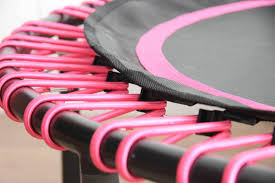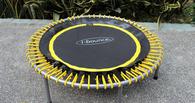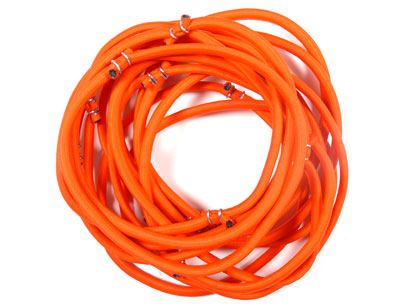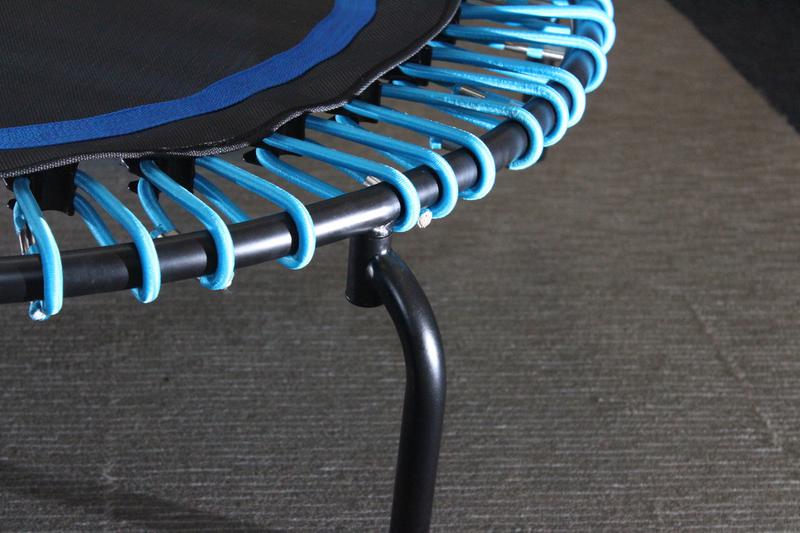This is for people that are confused about free bounces. Some jumpers want more free bounces and others need more tensile strength. A bungee rebounder that gives more free bounces will have more pop at the bottom of the bounce. When the cords lose their tensile strength at the highest extension point and there is a flat feel, it doesn't spring a person back up as much and the stored kinetic energy is lost. It takes more energy to bounce on a bungee rebounder like this and many people want this because it takes more energy from their legs.
Also, the mats that are designed for more air flow don't block the air as much and don't slow the bounce down. A laminated mat should give less free bounces than a non laminated bounce.
If someone wants to spend as little energy as possible then having more free bounces is what to look for. Also, when the bounce is flat it throws the person up in the air much differently than if the kinetic energy is not lost and there is that extra springiness at the deepest part of the bounce. Having a rebounder with less free bounces due to a bad bungee cord gives less control and it is harder to keep balance.
Note: just getting a cord with higher IT (initial tension) is not what I am talking about. A bungee cord with low tension that gives deeper bounces has less tensile strength. If someone wants a really strong tension that gives more bounces per minute, then the really strong bungee bands are what I would look for. There are many bungee cords on the market and it is very hard to find the right one just by going by your weight. Jump style also is something to consider. Some people are going to be doing aerobic exercise and staying as low as possible on the mat and not jumping at all. If the mat is too mushy or too firm this can affect the workout.
If anyone need help choosing the right bungee cord rebounder, I have reviewed nearly all the brands and have more experience than anyone I know of reviewing these. Take my rebounder quiz and I will help.
Bungee-Rebounders-Reviewed.com
WE ARE OPEN NOW
Schedule a consultation with a rebounding expert here
WE ARE OPEN NOW
Schedule a consultation with a rebounding expert here
Bungee-Rebounders-Reviewed.com
WE ARE OPEN NOW
Schedule a consultation with a rebounding expert here
WE ARE OPEN NOW
Schedule a consultation with a rebounding expert here








